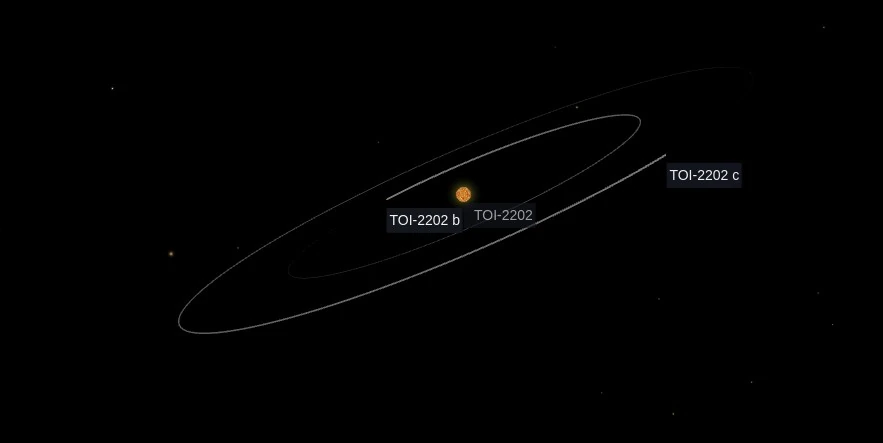Yale-led study reveals orbital tilt in pristine solar systems as common phenomenon

A new study spearheaded by Yale astronomer Malena Rice and published in The Astronomical Journal has made a significant discovery about the orbital tilt of planets in pristine solar systems. Contrary to previous assumptions that slanted orbits result from cosmic disturbances, this research suggests that even in stable solar systems, planets can exhibit an orbital tilt of up to 20 degrees.
The international research team, led by Assistant Professor Malena Rice from Yale’s Faculty of Arts and Sciences, focused on analyzing multi-planet solar systems that have remained relatively undisturbed since their formation.
The study began with measuring the orbit of TOI-2202 b, a warm Jupiter planet characterized by a larger size than Earth and a shorter orbital period. This measurement was compared with data from the NASA Exoplanet Archive, revealing a typical tilt of up to 20 degrees in similar planets.
Rice highlighted the importance of this discovery in understanding the early development of solar systems, including our own. It indicates that a slight orbital tilt is a normal aspect of solar system formation, aligning Earth’s system with the broader pattern observed in the universe.
Furthermore, this study contributes to Rice’s broader research on “hot” Jupiter solar systems, which are characterized by gas giant planets with very short orbital periods. The goal is to understand the causes of the extreme orbital tilt in these systems.
This new study represents the eighth outcome of the Stellar Obliquities in Long-period Exoplanet Systems (SOLES) survey, co-founded by Rice and former Yale postdoctoral fellow Songhu Wang, now at Indiana University.
The study’s co-authors include researchers from Belgium, Spain, Chile, Australia, and the United States. The research emphasizes the role of near-resonant planetary systems as indicators of the initial conditions of exoplanet systems and contributes to our understanding of quiescent planet formation and primordial stellar obliquity distribution.
References:
1 Astronomers find ’tilted’ planets even in pristine solar systems – Yale University – November 28, 2023
2 Evidence for Low-level Dynamical Excitation in Near-resonant Exoplanet Systems – Rice et al. – The Astronomical Journal – 2023 – DOI 10.3847/1538-3881/ad09de – OPEN ACCESS
Featured image: TOI-2202. Two planets orbiting a K-type star, 759 light-years from Earth. Credit: NASA/Exoplanets

this is far from my field, but i have no idea how one can speak of an orbital tilt to a solar system…to me, saying that implies that there is a horizontal or a vertical to space, which flies in the face of my understanding…to me, space should have no horizontal or vertical, no top, no bottom, no sides, and no way to have any orientation, much less a “tilt”…